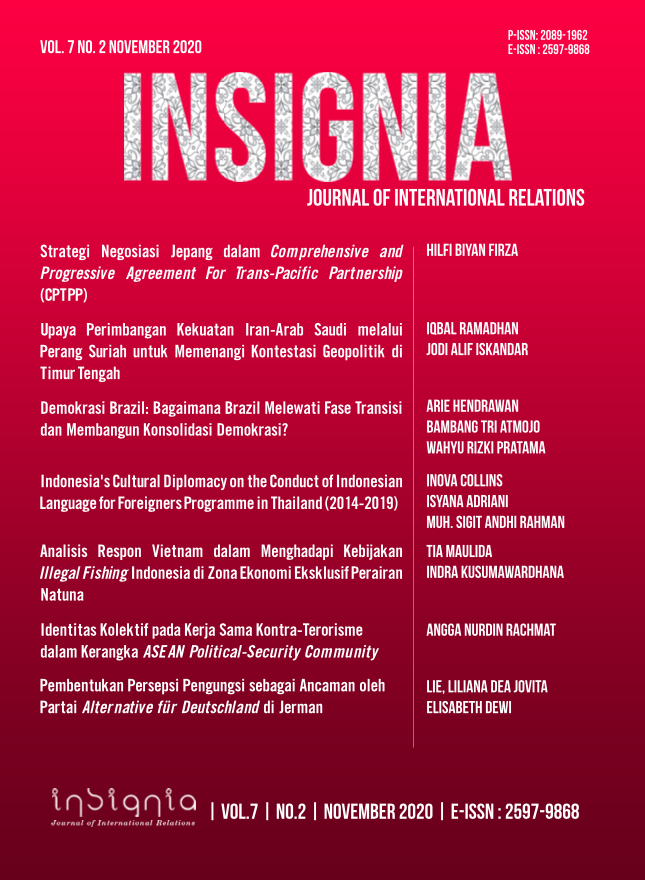Identitas Kolektif pada Kerja Sama Kontra-Terorisme dalam Kerangka ASEAN Political-Security Community
Abstract
ASEAN as a regional organization is currently in an effort to develop cooperation in the form of the ASEAN Community. The formation of the ASEAN Community is based on three pillars, where one of the pillars is the political-security pillar (ASEAN Political-Security Community / APSC) who faces the most dynamic challenges related to security issues in the Southeast Asia. This security issue certainly has an influence on interactions both among intra-regional states and with extra-regional states. This paper aims to analysis the challenges and opportunities faced by the ASEAN political-security community to strengthen cooperation in dealing with security issues in the Southeast Asian. This paper is based on a constructivism analysis of the formation of a security community. This paper will get an overview of the challenges and opportunities faced in the realization of cooperation to tackle security issues in the Southeast Asia region within the framework of the APSC. The description of these challenges and opportunities can be the basis for analyzing what strategies must be done to encourage the realization of the APSC in accordance with what is expected by the members states.
1. The author retains copyright and grants the journal the right of first publication with the work simultaneously licensed under a Creative Commons attribution license that allows others to share the work within an acknowledgment of the work’s authorship and initial publication of this journal.
3. Authors are permitted and encouraged to post their work online (e.g., in institutional repositories or on their websites) before and during submission, as it can lead to productive exchanges and earlier and more extraordinary citations of published works.


.png)


